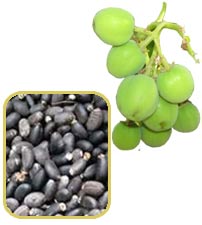Jatropha Curcas is an excellent biofuel crop which has many other advantages over existing crops.

The biofuel yield of various crops has been measured, and is usually given in barrels of oil per square mile per year. Corn is a common biofuel crop in the USA, but it yields under 200 barrels (per square mile per year). Rice for example yields almost 1000 barrels, however it is an essential worldwide food crop as are most of the other potential biofuel crops.
It is simply not viable to use good quality arable farmland for growing biofuels, biofuel crops need to be grown on marginal land if we are to benefit from them. This is where Jatropha scores highly. Not only does it have a great yield of well over 2,000 barrels of oil per square mile per year, it also increases the fertility of the land on which it is grown so that it can potentially be used for food crops in subsequent years.
Jatropha is perennial which can grow in arid conditions (even deserts), on any kind of ground, and does not require irrigation or suffer in droughts. Therefore unlike the common biofuel crops of today (corn and sugar), they are very easy to cultivate even on poor land in Africa providing great social and economic benefits for that region.
Jatropha is fast growing and it begins yielding oil in the second year and for the next forty to fifty years. Optimal yields are obtained from the sixth year, and spaced at 2 metre intervals, around 2500 plants can be cultivated per hectare. Jatropha absorbs large amounts of carbon dioxide from the atmosphere and therefore earns carbon credits.
Find out more about Jatropha and its use as a biofuel here with our guide to the facts and figures about Jatropha.